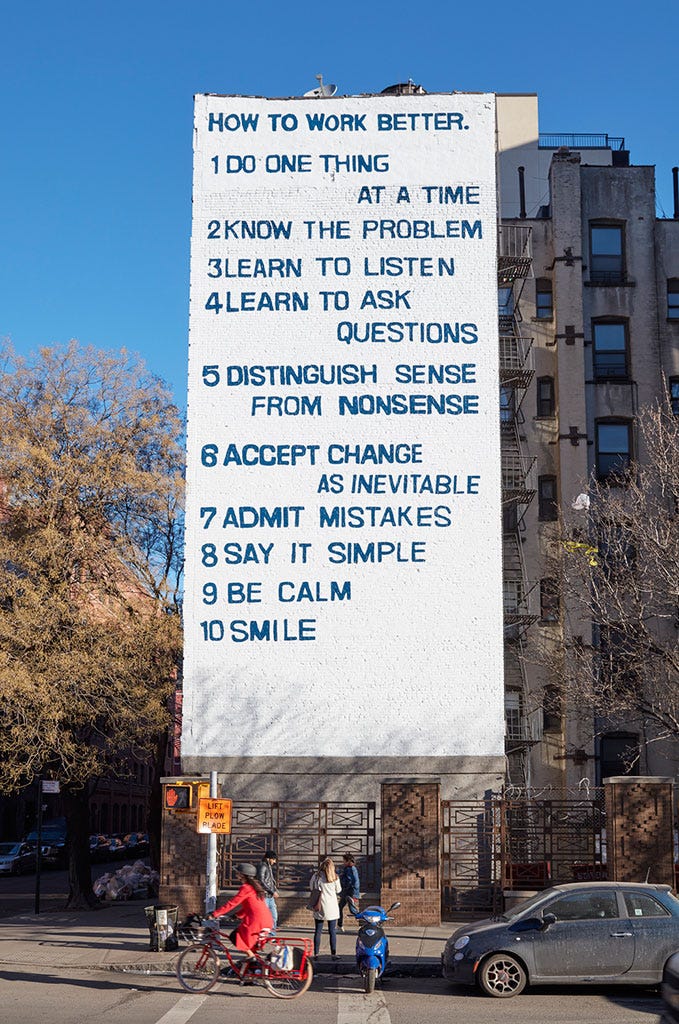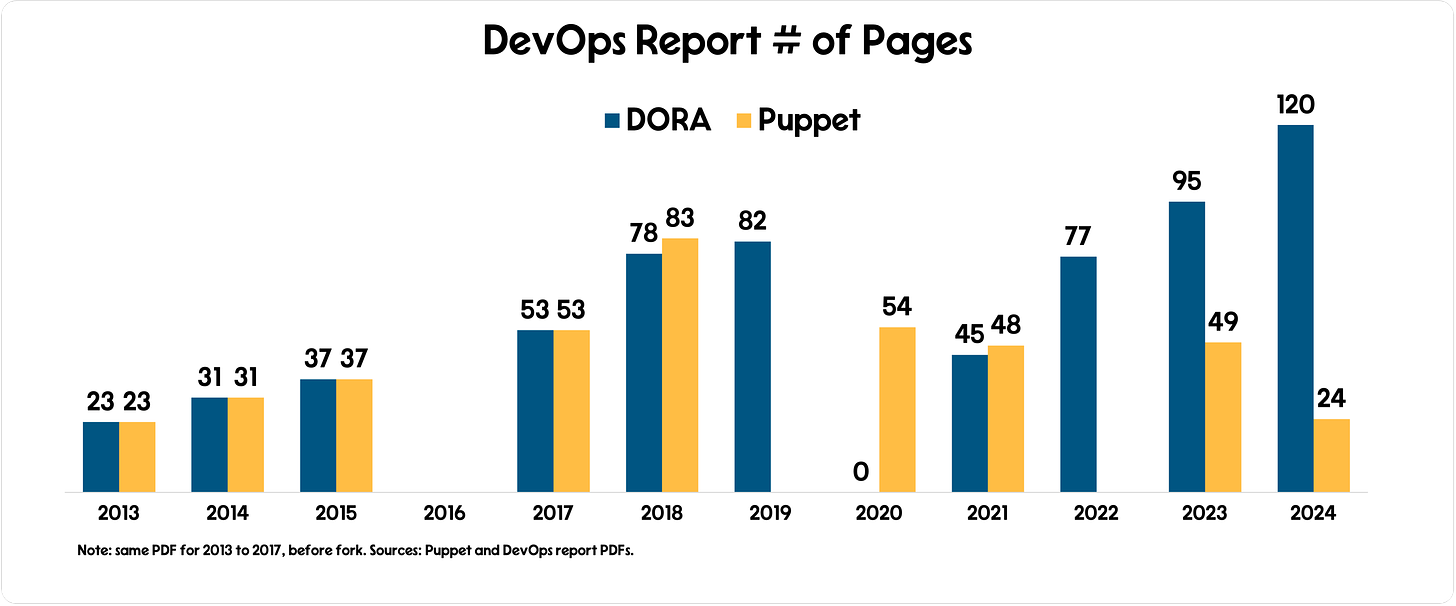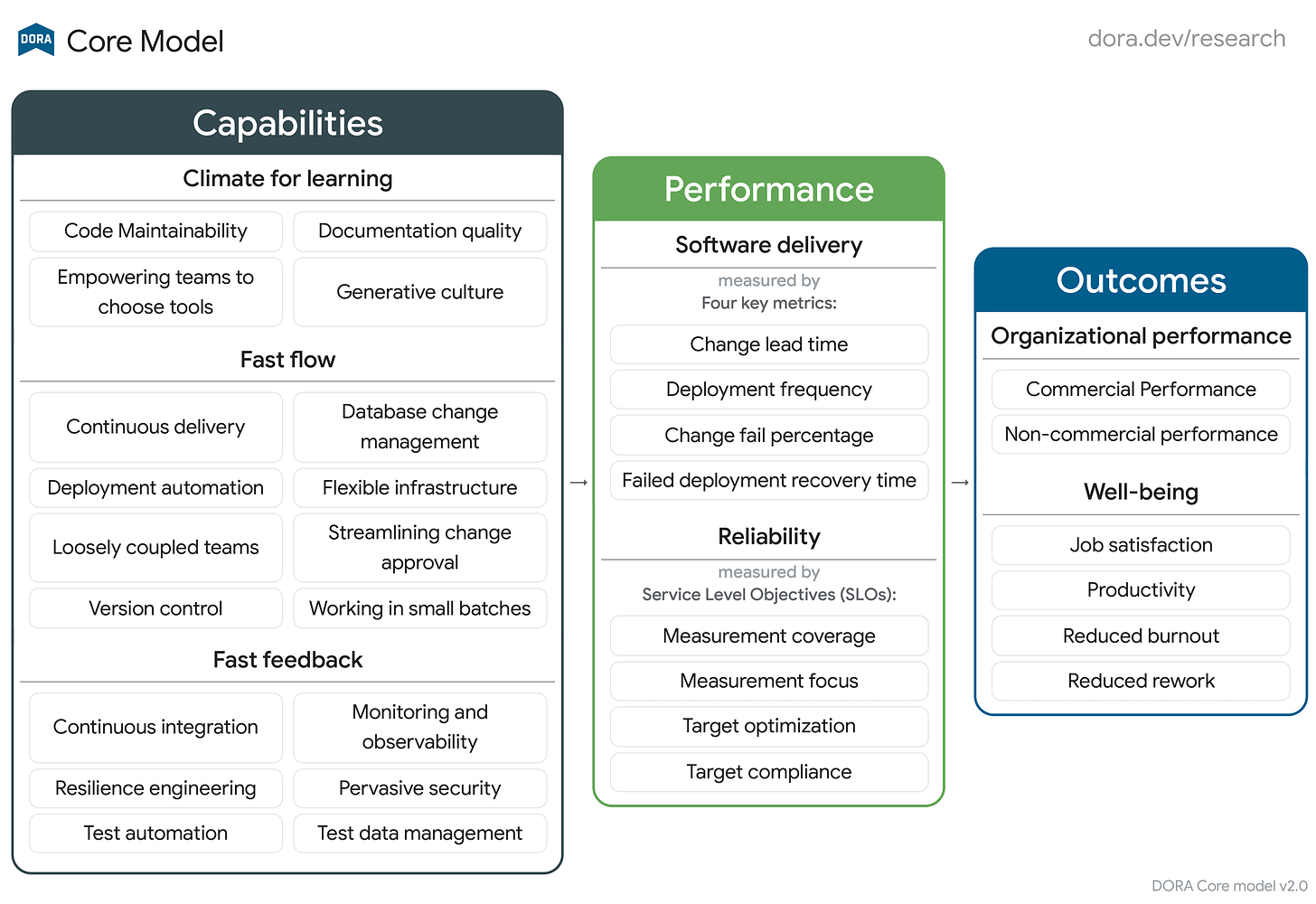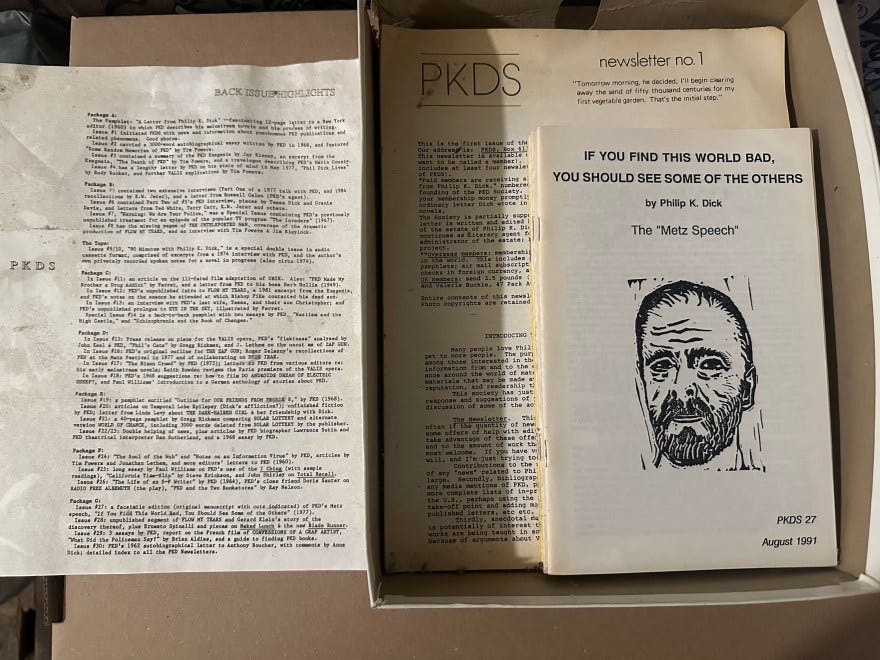Coté
Google NotebookLM: AI-Powered Document Analysis Tool - Ideas for using NotebookML.
Citi taps Google Cloud for app migration, AI adoption - “As evidence of progress, CFO Mark Mason pointed to 450 apps retired by the bank since the start of the year. Citi has reduced tech sprawl by eliminating 1,250 apps in the last two years, Mason said.” // Thinks of all the zombie apps like that across every organization in the world.
How PostgreSQL is Dominating AI and Multicloud - Postgres never goes away.
Platform Engineering: Why You’re Doing It Wrong - Hopefully also how to do to real right.
AI is terrible at shift-left
Start with good content, get better content
I've seen enough generative AI used to help marketing now that my theory is: you should only use it if you're already good at making whatever "the content" or strategy is. The AI will help you make it better, or more broadly consumable. It will do a terrible job starting from a blank slate.
You can coax it, try to get it to know your style, feed/RAG more context in, workshop and refine it…but at that point you’ve spent just as much time as it would taken to just type an email, call someone to plan/brainstorm, blog post, or hit record.
The bigger marketing productivity gains are people-based (just like dev and ops): they need skills/mentoring/pairing/training; more frequent, but quicker/shorter collaboration; a stripped down pipeline that remove/automates governance; and cleaner tops-down direction to be principle self-directed.
And the bigger, obvious AI anti-pattern is simply garbage in, garbage out. The AI is just going to predict the next words (or pixels/sound-waves) to output. If you feed it garbage, it's going to know that what usually follows is more garbage.
If you start with good stuff, the AI will help you get to even good-er stuff for sure. AI is terrible at shift left.
DORA 2024
The 2024 DORA report is out. I haven’t really digested it yet, but the findings on platform engineering are weird/troubling:
Internal developer platform the key findings can help your platform users had 8% higher levels of individual productivity and 10% higher levels of team performance. Additionally, an organizations' software deliver and operations performance increases 6% when using a platform. However, these gains do not come without some drawbacks. Throughput and change stability saw decreases of 8% and 14%, respectively, which was a surpassing results.
Still:
Overall, the impact of a platform is positive, individuals were 8% more productive and teams performed 10% better when using and internal developer platform… [W]hen a platform is used in an organization’s overall performance [see definition of that], with an increase of 6%.
I’ll have to go check the numbers to be sure, but I feel like I’ve seen much better productivity results over the years in the Cloud Foundry community: going from months and months to deploy to weeks and days. One of our Software Defined Talk listeners, Chris, did a “live reading” with plenty of commentary which you can see in our Slack. I recommend it if you’re interested in the DevOps reports.
The last time I commented on DORA, Nathen Harvey pointed me to this, which I think is what most people want to see. That is, “what organizations behaviors and process do I change to get them awesome results?”:
If you’re doing the DevOps and it doesn’t seem to be working, then look at this chart and ask “are we doing these things” and if not, that’s why doing the DevOps is not doing it for you. Top digital transformation tip: if you don’t change, you won’t change.
Here’s a blog post of highlights and a pretty good infographic of “executive level” take-aways.
Software Defined Talk Podcast #490: AI's use UI's
This week, we talk about Anthropic's new AI agent, cloud exits, and why BMC is splitting up. Plus, a quick update on the WordPress drama and some thoughts on Amsterdam’s autumn weather.
Listen to it, or watch the unedited video if you prefer that kind of thing.
Relative to your interests
It’s analyst predictions season. Is it me, or does it get earlier every year, har, har. So, lots of enterprise IT stuff this episode, starting with enterprise AI.
Gartner Forecasts Worldwide IT Spending to Grow 9.3% in 2025 - Setting expectations: “CIOs will begin to spend on GenAI, beyond proof-of-concept work, starting in 2025. More money will be spent, but the expectations that CIOs have for the capabilities of GenAI will drop. The reality of what can be accomplished with current GenAI models, and the state of CIO’s data will not meet today’s lofty expectations.”
Gartner sounds alarm on AI cost, data challenges - ‘“Nearly half of CIOs say AI has not yet met ROI expectations, according to Gartner research. “The truth is that you’ve been in the mud for the last year, working hard to find all those benefits that were promised by AI,” said Hung LeHong, distinguished VP analyst and Gartner Fellow, during the keynote session. “It hasn’t been easy.”’
But where will all that money go? OpenAI Is Growing Fast and Burning Through Piles of Money - "OpenAI’s monthly revenue hit $300 million in August, up 1,700 percent since the beginning of 2023, and the company expects about $3.7 billion in annual sales this year, according to financial documents reviewed by The New York Times. OpenAI estimates that its revenue will balloon to $11.6 billion next year.” // Also, big firm consultants.
Gartner Forecasts Worldwide IT Spending to Grow 9.3% in 2025 - Setting expectations: “CIOs will begin to spend on GenAI, beyond proof-of-concept work, starting in 2025. More money will be spent, but the expectations that CIOs have for the capabilities of GenAI will drop. The reality of what can be accomplished with current GenAI models, and the state of CIO’s data will not meet today’s lofty expectations.”
Gartner Unveils Top Predictions for IT Organizations and Users in 2025 and Beyond - “By 2029, 10% of global boards will use AI guidance to challenge executive decisions that are material to their business.” // Weird prediction.
Gartner Forecasts Worldwide IT Spending to Grow 9.3% in 2025 - Setting expectations: “CIOs will begin to spend on GenAI, beyond proof-of-concept work, starting in 2025. More money will be spent, but the expectations that CIOs have for the capabilities of GenAI will drop. The reality of what can be accomplished with current GenAI models, and the state of CIO’s data will not meet today’s lofty expectations.”
The Modern CIO: Moving from Technology Steward to Transformation Agent - AI is cool, but there’s still that 95% of other day-to-day shit to deal with in the enterprise.
IDC FutureScape: Worldwide Cloud 2024 Predictions - “Application modernization has been a nagging problem for decades but has recently emerged as a critical concern for enterprises, with around 62% of organizations worldwide considering it a high or top priority today, and over 70% expecting it to be a high or top priority in the next 24–36 months.” // “With 50% of CEOs concerned about their company’s cloud spending and 64% of CIOs say they are spending more on cloud than budgeted” (IDC, 2023)
Gartner IT Symposium/Xpo 2024 Orlando: Day 3 Highlights - “By 2028, more than 50% of enterprises will not get value from their multicloud implementations.” And: “By 2028, cloud-native platforms will serve as the foundation for more than 95% of new digital initiatives — up from less than 50% in 2023.”
The Future of Smart Rings - “In the last full year of data, 2023, IDC recorded Global Ring sales of 880,000 units, with Oura representing 80% and Ultrahuman in second with 12%. We are forecasting this to rise to 1.7 million in 2024 and 3.2 million in 2028, equating to a year-over-year growth rate of 29.5%. For comparison, the total global Smartwatch sales in 2023 were roughly 161 million devices, forecasted to rise to 175 million by 2028, an average year-over-year growth rate of 1.7%.”
IBM revenue misses, but execs say AI will drive future growth - “The company’s Red Hat subsidiary, which anchors its hybrid cloud strategy, grew revenue 14%. Krishna noted that the Red Hat business has doubled in size since the acquisition five years ago.”
MQTT turns 25 – here’s how it has endured - “Today, 25 years on, it is in many things and places you may not realize – hobbyists and makers use it, it’s used (for example) in Dyson air conditioners and their associated apps, in 3D printing, in home alerting, in industry and manufacturing – it’s almost certain that more than one of the apps on your phone is using MQTT somewhere in the stack.” // MQTT is “used (for example) in Dyson air conditioners and their associated apps, in 3D printing, in home alerting, in industry and manufacturing – it’s almost certain that more than one of the apps on your phone is using MQTT somewhere in the stack.” Andy Piper on 25 years of MQTT
Users remain on PostgreSQL 12 as end of life looms - “Users of PostgreSQL 12 have less than a month to prepare for the database to enter end of life and become unsupported.”
Unpopular opinion about “Moving back to on-prem” - The case against private cloud. // Also this on Kubernetes: “Although you could develop new applications based on Kubernetes on-prem, the cost and complexity of managing the control plane, and the limited scale capabilities, will make your solution a wannabe cloud. A small and pale version of the public cloud.” What if all the consternation around Kubernetes was because people keep trying to run it themselves? “Kubernetes is only for public cloud providers,” or something like that.
Basecamp-maker 37Signals says its “cloud exit” will save it $10M over 5 years - “Late last week, Hansson had an update: it’s more like $10 million (and, he told the BBC, more like $800,000 in gear). By squeezing more hardware into existing racks and power allowances, estimating seven years' life for that hardware, and eventually transferring its 10 petabytes of S3 storage into a dual-DC Pure Storage flash array, 37Signals expects to save money, run faster, and have more storage available.”
The Other Bubble - What the enterprise software market looks like from the outside. Also with a side of AI-washing.
Don’t Click Here - I’ve gone go back and forth on this over the decades. Like every other good little HTML’er in the 90s, I would link the words in a sentence that indicated what the link went to. I kept doing this in the 2000s. But then in the 2010’s when we started treating the web less like documents and more like, I don’t know, like web of apps, the idea of telling people to “click here” seemed more obvious. And in the 2020’s, I don’t use it at much, but a click here is sometimes more natural especially when you’re doing a CTA. That is: I accept that sometimes “click here” style linking is OK and maybe even the best choice. Still, if you were to pick one, I’d go with avoiding “click here” linking.
This is an under appreciated part of most Dutch systems: they do the minimum needed, cutting out all the irrelevant stuff. There are still forms, waiting, etc., but the paper work tends to be efficient. In healthcare this can seem insane compared to American standards. In the Netherlands, they don’t do annual checkups and paramedical is prescribed all the time as a cure all. It’s like for each step in creating a system they think “is this needed? If not, cut it.” I think the American test is “is it possible this might be needed?” and if so, you include it.

Wastebook
Ale: “it’s misty outside.”
Me: “like my head.”
Ale: “that’s all that it’s in there? Just mist and gas.”
Me: “That’s right.”
Ale: “And fart jokes.”
Meanwhile:
“snackers of all ages” Here.
“I am a cat in a hobo hat trying to steal a pie off a window sill.” RotL #556. And: the t-shirt that became a book is now a t-shirt based on the book.
“They put coffee in the coffee in Brazil.” I don’t know if you need one hour of this, but here it is.
“multicloud by accident,” Tracy Woo.
“Hot Lunch.”
“an excess of perseverance.” Here.
“It was a Honda Accord, and the lyric is ‘Midnight black on the outside,’ but the car was actually green—midnight black just sounded cool.” “Midnight.”
And: “I never got caught. But I think she’s going to find out now.” Ibid.
Related: “This song really captures the mood of cruising Texas highways and taking it all in while the sun sets.”
And: “No matter where you are in Texas, it’s big sky, big sun - that unifies the state. Khruangbin and Leon are both on tour all the time, so I think there was a relatable thing of just missing the feeling of home.”
Conferences
Danielle has a new pitch for why you should join us at Explore. If you’re going to Explore, be sure to pre-register for my two sessions. It helps! Check out all the poop at cote.pizza.
VMware Explore Barcelona, speaking, Nov 4th to 7th. GoTech World, speaking, Bucharest, Nov 12th and 13th. SREday Amsterdam, speaking, Nov 21st, 2024.
Discounts! SREDay Amsterdam: 20% off with the code SRE20DAY.
Logoff
What my talks sound like to my family:
Gartner Forecasts Worldwide IT Spending to Grow 9.3% in 2025 - Setting expectations: “CIOs will begin to spend on GenAI, beyond proof-of-concept work, starting in 2025. More money will be spent, but the expectations that CIOs have for the capabilities of GenAI will drop. The reality of what can be accomplished with current GenAI models, and the state of CIO’s data will not meet today’s lofty expectations."
IDC FutureScape: Worldwide Cloud 2024 Predictions - “Application modernization has been a nagging problem for decades but has recently emerged as a critical concern for enterprises, with around 62% of organizations worldwide considering it a high or top priority today, and over 70% expecting it to be a high or top priority in the next 24–36 months.” // “With 50% of CEOs concerned about their company’s cloud spending and 64% of CIOs say they are spending more on cloud than budgeted” (IDC, 2023)
The Future of Smart Rings - “In the last full year of data, 2023, IDC recorded Global Ring sales of 880,000 units, with Oura representing 80% and Ultrahuman in second with 12%. We are forecasting this to rise to 1.7 million in 2024 and 3.2 million in 2028, equating to a year-over-year growth rate of 29.5%. For comparison, the total global Smartwatch sales in 2023 were roughly 161 million devices, forecasted to rise to 175 million by 2028, an average year-over-year growth rate of 1.7%."
Don’t Click Here - I’ve gone go back and forth on this over the decades. Like every other good little HTML’er in the 90s, I would link the words in a sentence that indicated what the link went to. I kept doing this in the 2000s. But then in the 2010’s when we started treating the web less like documents and more like, I don’t know, like web of apps, the idea of telling people to “click here” seemed more obvious. And in the 2020’s, I don’t use it at much, but a click here is sometimes more natural especially when you’re doing a CTA. That is: I accept that sometimes “click here” style linking is OK and maybe even the best choice. Still, if you were to pick one, I’d go with avoiding “click here” linking.


